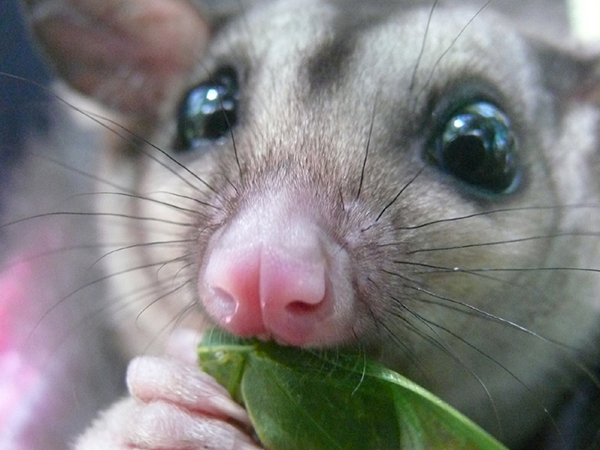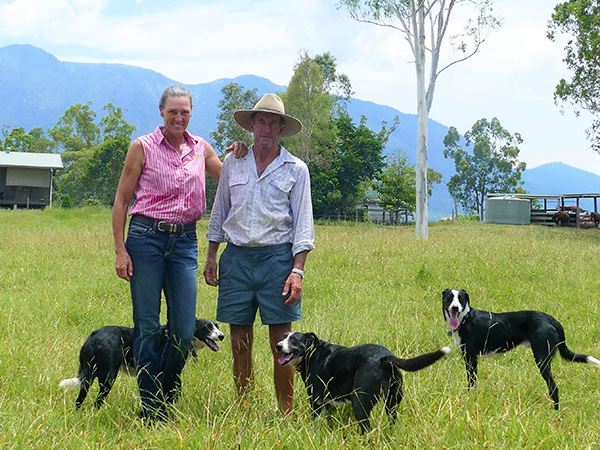Grazing for Gliders protecting endangered gliding possum
A rare gliding possum has become the catalyst to improve grazing practices in the Wet Tropics region of Queensland.
Landholders are working to better protect the endangered mahogany glider through a ‘Grazing for Gliders’ program that began last year and has led to both revegetation and holistic grazing initiatives in critical glider habitat.

The endangered mahogany glider, found only in north Queensland.
Terrain NRM community partnerships officer Jacqui Richards said it was a “win-win” for the environment and graziers, with farmers developing projects unique to their properties following a series of workshops and farm visits covering everything from soil biology and planned rotational grazing to wildlife-friendly fencing.
The program is funded through a Targeted Threatened Species Project grant from the Australian Government and delivered by Terrain NRM with support from the Mahogany Glider Recovery Team.
Graziers Justine Douglas and Rusty Smith said living in mahogany glider-habitat had been a drawcard when they bought their Kennedy Valley property. The challenge now was to convert the old cane farm to grazing land while improving glider habitat and maintaining profitability.
“We began with glider-friendly fencing – changing the top wire from barbed to plain wire – and we’ve recently been planting hundreds of trees through the program which will become wildlife corridors and shade for cattle,’’ Justine said.
The trees, and new moveable electric fencing, are also allowing them to sub-divide the paddocks, as part of an improved stock rotation program to better manage the pastures, improve soil health and reduce both weed problems and herbicide usage.
Graziers David and Jean Bridgeman are also sub-dividing their paddocks with wildlife-friendly fences.
“Most of ours will be split in half for planned rotational grazing,’’ David said. “With our Kennedy Valley farm’s flooding issues, focusing on grass structure and better resting paddocks is a good thing, and it’s also good for the ecosystems that are part of the property.
“We won’t be flogging the land and there’ll be plenty for everybody – all the creatures.”

Justine Douglas and Rusty Smith said Grazing for Gliders accelerated change on their Kennedy Valley property.
Terrain NRM’s Jacqui Richards said the ‘Grazing for Gliders’ program was helping graziers to run profitable businesses while protecting threatened species.
“Mahogany gliders and cattle are actually very compatible, as mahogany gliders rely on open grassy woodlands,” she said.
“Graziers have been to five workshops with Judi Earl and David Hardwick who are experts in holistic grazing, land and soil management.
“Based on their learnings from the workshops and objectives for their properties, landholders submitted funding proposals and received materials and support to make changes. These changes reduce threats to the mahogany glider and, in most instances, also improve the landholder’s ability to manage grazing pressures.
“On-ground works are happening now and the overall results include 3ha of wildlife corridor revegetation, 6km of wildlife-friendly fencing, 15ha of weed control, and improved grazing management practices for more than 50ha of mahogany glider habitat.”
Mahogany gliders are listed as endangered. They are only found in North Queensland where they live in a narrow and highly-fragmented band of lowland forest extending about 120km from Ollera Creek, north of Townsville, to the Hull River near Tully.
Justine Douglas said private landholders had an important role to play in their survival.
“Conservation efforts on our property are a good way to give something back to the community,’’ she said. “Private land is an integral part of the solution.”
For further information, contact: Julie Lightfoot, Communications, Terrain NRM: [email protected], Ph: 0427 039 117.



